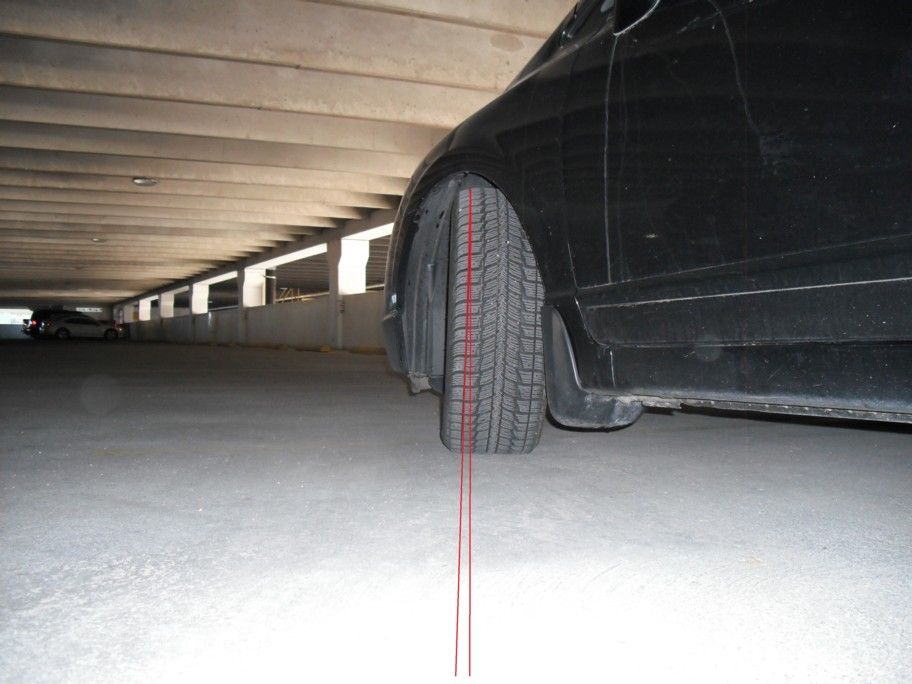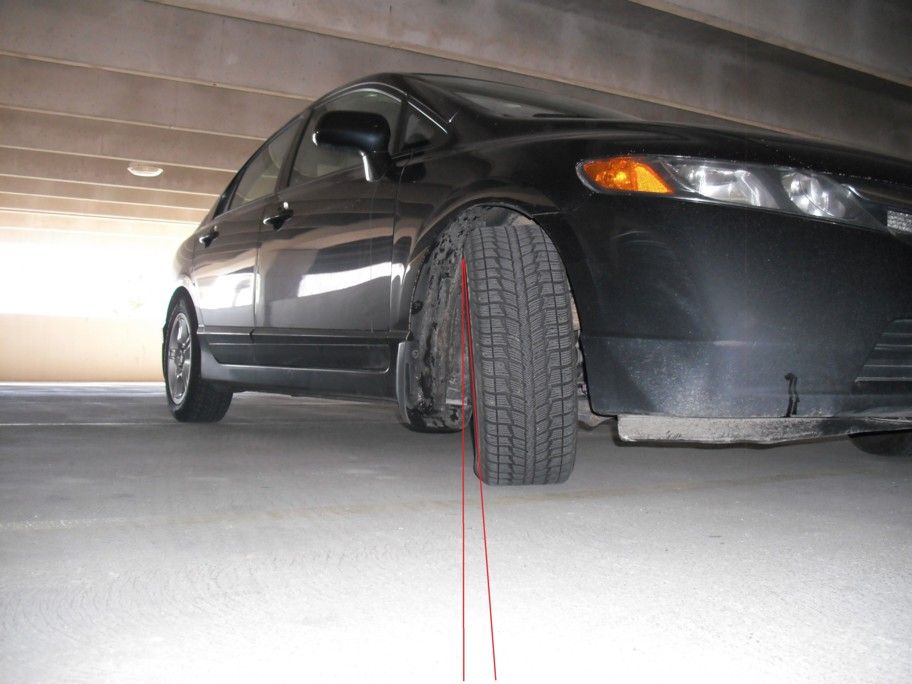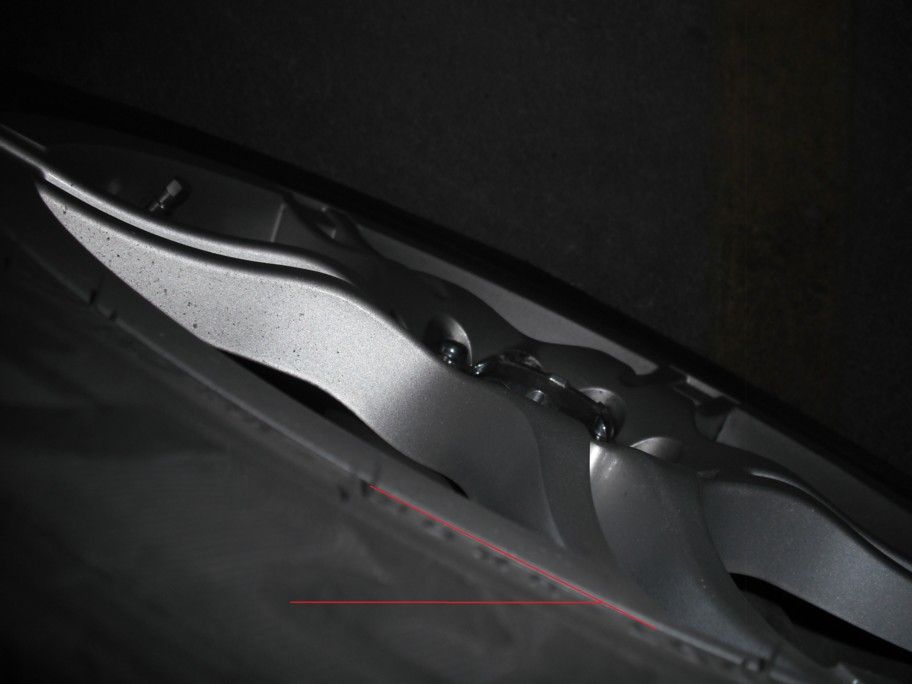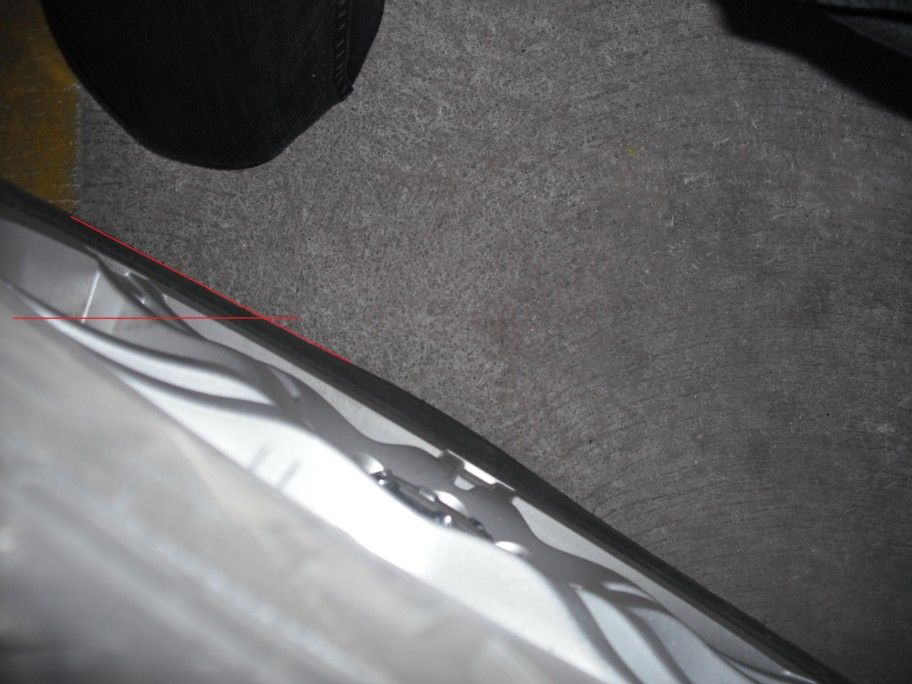Harvard
Jan 18, 2015Explorer
Estimating Caster Using a Digital Camera
This is a method estimating the front end caster using a digital camera and using Windows Paint to estimate camber angles from the picture.
Normally one would take 2 pictures from each wheel, one full left and a second full right. For this approximation we will assume both wheels are identical and simply use one camber picture from each wheel when the steering wheel is cranked full right.
NOTES ABOUT THE CAMERA SETUP:
1. Camera lens should be in line with the outside side of the wheel.
2. Camera should be mounted on top of a stand (I use a bin that sits upside down on the ground) that sits on the ground such that the camera is parallel to the vehicle. The vehicle needs to be parked on a flat surface BUT being level is not a requirement.
This first picture is taken in line with the outside of the drivers side wheel and measures a camber of NEGATIVE 2.5 Degrees.

This second picture is taken in line with the outside of the passengers wheel and measures a camber of PLUS 3.5 Degrees.

This picture is taken with the camera resting on the drivers side fender and captures the drivers side wheel to be cranked about 30 Degrees to the right.

This picture is taken with the camera resting on the passengers side fender and captures the passengers side wheel to be cranked about 33 Degrees to the right.
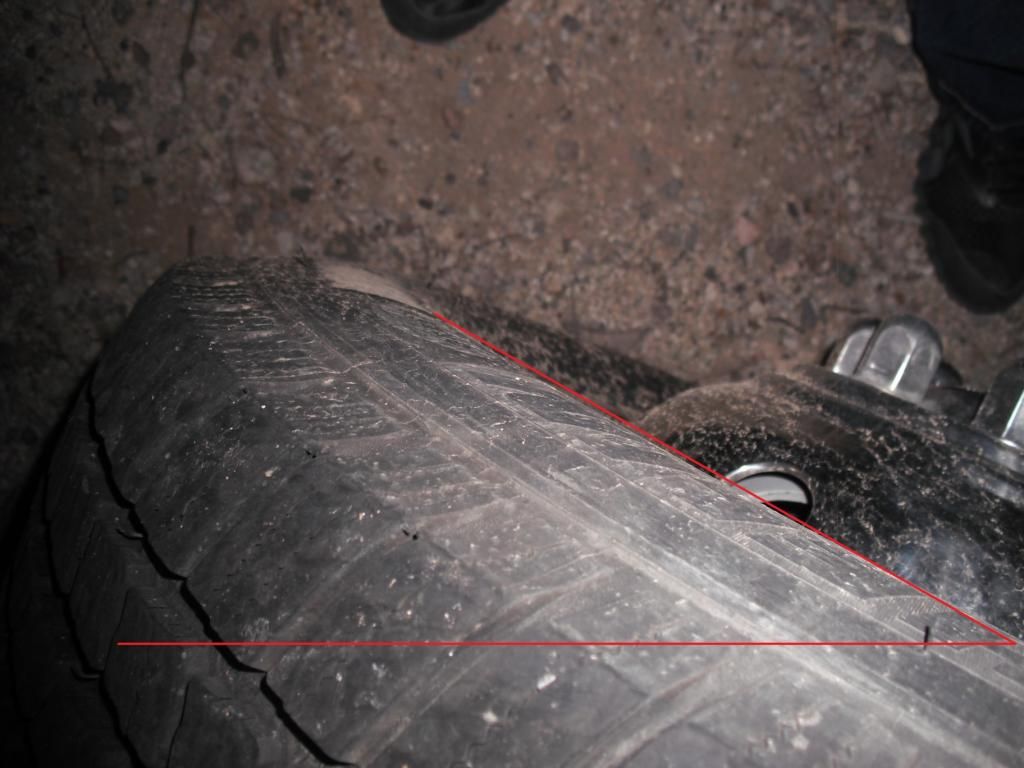
The estimated CASTER (K) is found as:
K = ( 180 / pi ) * ( ( C1 - C2 ) / ( T1 - T2 ) )
Where:
C1 is the +CAMBER when the DS wheel is FULL LEFT or the PS wheel is FULL RIGHT.
C2 is the -CAMBER when the DS wheel is FULL RIGHT or the PS wheel is FULL LEFT.
T1 is the +TURN ANGLE when DS wheel is FULL LEFT or the PS wheel is FULL RIGHT.
T2 is the -TURN ANGLE when DS wheel is FULL RIGHT or the PS wheel is FULL LEFT.
In this case:
K = (180 / pi) * ((+3.5 - (-2.5)) / (+33 - (-30)) )
K = 57.32 * (+6.0 / +63) = +5.5 Degrees
Normally one would take 2 pictures from each wheel, one full left and a second full right. For this approximation we will assume both wheels are identical and simply use one camber picture from each wheel when the steering wheel is cranked full right.
NOTES ABOUT THE CAMERA SETUP:
1. Camera lens should be in line with the outside side of the wheel.
2. Camera should be mounted on top of a stand (I use a bin that sits upside down on the ground) that sits on the ground such that the camera is parallel to the vehicle. The vehicle needs to be parked on a flat surface BUT being level is not a requirement.
This first picture is taken in line with the outside of the drivers side wheel and measures a camber of NEGATIVE 2.5 Degrees.

This second picture is taken in line with the outside of the passengers wheel and measures a camber of PLUS 3.5 Degrees.

This picture is taken with the camera resting on the drivers side fender and captures the drivers side wheel to be cranked about 30 Degrees to the right.

This picture is taken with the camera resting on the passengers side fender and captures the passengers side wheel to be cranked about 33 Degrees to the right.

The estimated CASTER (K) is found as:
K = ( 180 / pi ) * ( ( C1 - C2 ) / ( T1 - T2 ) )
Where:
C1 is the +CAMBER when the DS wheel is FULL LEFT or the PS wheel is FULL RIGHT.
C2 is the -CAMBER when the DS wheel is FULL RIGHT or the PS wheel is FULL LEFT.
T1 is the +TURN ANGLE when DS wheel is FULL LEFT or the PS wheel is FULL RIGHT.
T2 is the -TURN ANGLE when DS wheel is FULL RIGHT or the PS wheel is FULL LEFT.
In this case:
K = (180 / pi) * ((+3.5 - (-2.5)) / (+33 - (-30)) )
K = 57.32 * (+6.0 / +63) = +5.5 Degrees










